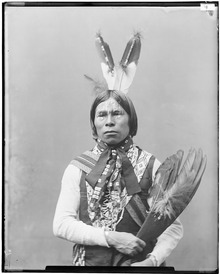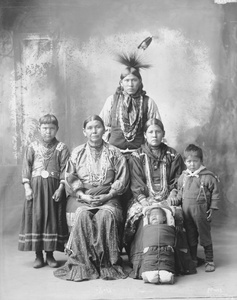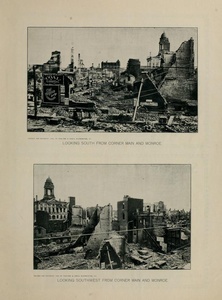Historic landmarks
Memorials
Corvette Corral
Famous People
Soldiers and Sailors Home
Pre- 1820's
The Kickapoo Indians were the original inhabitants of this area. Kickapoo Indians were in fact living in present day Illinois (New France) as early as the 1670s . In the 1700s the "Prairie Band " of the Kickapoo came to settle in Illinois. Many of them were ran out of Wisconsin by the Iroquois when they were trying to expand their territory. They did give some of the settlers a hard time but it was mostly just talk and they did not follow through on their threats.

1820's thru 1860's -First Non-Native Settlers
The first group of non-native settlers arrived in 1822. The families that first settled here changed the name of the area from “Keg Grove” to Blooming Grove to avoid the name that brought to mind, images of drunken Indians and such. The families of John Hendrix and John Dawson were the first two families that settled here in the place that is now called Bloomington.James Allin, who was one of the promoters of the new county, offered to donate 60 acres (240,000 m) of his own land for the new town. His offer was accepted, and Bloomington was laid out. Its lots were sold at a well-attended auction on the 4th of July,1831(5) It was said that it was a very noisy auction. By 1824 there were roughly 15 families in Blooming Grove. The founding settlers were a very religious bunch and encouraged the people who settled her to be so likewise. The persuaded non-desirables to move on out of the area. In 1824 Ebenezer Rhodes was the first minister to settle in Blooming Grove. There was a little bit of trouble in the early days with the Kickapoo Indians who were still plentiful in the area. The chief, by the name MaSheeNa threatened to burn the houses of the families of the settlers here but changed his mind. He gave them till fall to leave. The settlers somehow won his confidence and he decided not to molest them. In 1824 the residents voted in our county to keep it a free county and not allow slavery in our area. In 1827 Blooming Grove had grown to 20 families. It is also said that Jesse Fell, along with David Davis were the two men who talked Abraham Lincoln into running for President. Many farmers were attracted by the fertile soil and agriculture became an important factor for the economy. Downtown became a thriving agriculture and commerce center. It has been noted that Abraham Lincoln, while working in the field of law would do business in the town center. There were only about 2,000 people that lived in the town during the 1850’s In 1854 the town of North Bloomington was platted in the area which was commonly known as "The Junction," which was located at the intersection of the Illinois Central and the Chicago & Alton railroads. At the time, the town consisted of all real estate bound between North Street to the north, South Street (now Florence) to the south, Elm Street (now Fell) to the west, and Chicago Street (now Linden) to the east. This parcel of land belonged to Joseph Parkinson, after whom Parkinson Street was named. Portrait of Jesse Fell; The first addition to the new town was developed by Jesse Fell in 1857 and lay north and east of the original plat. Therefore, although Jesse Fell is referred to as the "founding father" of Normal, he was not involved in the original layout of the town, but he soon became a central figure in the town’s development.Jesse Fell is credited with many of the activities that built the fabric of the early town. Fell planted many trees on his properties, and the deeds to his lots had clauses that required the maintenance of the trees. In addition, Fell also placed clauses restricting the sale of alcohol on the deeds to the properties. Fell eventually became one of the most well known men in the history of the town, while the influence of Parkinson slowly faded. This information came from: http://www.normal.org/About/History.aspIt is also said that He, along with David Davis were the two men who talked Abraham Lincoln into running for President
The first jail was built in 1832. At the time, there were about 150 residents in Bloomington. In August,1832, the Bloomington Police Department was created when Bloomington’s city government was created.
Before 1865, Normal was known as North Bloomington. Named after the Illinois State Normal School (a school for becoming a teacher), which later become Illinois State University.
CCHS began as St. Mary High School, built by Holy Trinity Parish around 1886. Trinity High School opened on September 3, 1928 and became Central Catholic High School when it was taken over by the Roman Catholic Diocese of Peoria in 1968. The school was later moved to Airport Road, beginning classes on August 25, 2003.
1900's -Early Town Growth
In 1900 a police officer discovered a fire in a laundry across the street from the City Hall and Police Station at Monroe and East Streets. Much of the downtown was burned. The fire only lasted for about 8 hours but did massive amounts of damage.This did not stop the city, however the burnt area was quickly rebuilt from the designs of local architects George Miller and Paul O. Moratz. , and in the 1920's Bloomington grew quickly, with the advent of railroads and highways, as well as many insurance companies setting up shop, including Country Companies and State Farm.(3) The people of Bloomington and the businesses had a total of two million dollars in losses from the fire.

 Before and after pictures of the Great Fire in 1900
Before and after pictures of the Great Fire in 1900
1920's -Route 66, State Farm State Farm Insurance was .founded in 1922 by retired farmer and insurance salesman George Jacob "G.J." Mecherle.(2)
The famous Hwy 66 was founded in 1926 and quickly became a preferred route for many people who wished to travel west on the new numbered highway system. The highway was seen as a romantic magical road west. It became an escape for farmers and their families during the dust bowl and the great depression. In his novel, The Grapes of Wrath, writer, John Steinbeck, called it the Mother Road and it has carried that name ever since. It was used by returning GI's and their families to travel to California and the booming job market there. It was used by the hippie generation to join the flower child scene in California as well. It runs near interstate 55 and through nearby Towanda. (4) There are yearly auto shows on that small area of the road in Towanda that attracts many car enthusiasts . (4)
1940's- Growth after the war.
By the 1940's there were about 45000 people in Bloomington. The police force replaced a signal light that let officers know about a call waiting with radio's in their cars. They also purchased sub-machine guns. Many of the ranch style homes in the town were built around the end of ww2 for the returning troops.
2000s
The 2010 census showed the city had a population of 76,610. making it the 12th most populated city in Illinois, and the fifth-most populous city in the state outside of the Chicago Metropolitan Area.Combined with Normal, the twin cities have a population of roughly 130,000.(5)The City of Bloomington and McLean County is the fastest-growing area in Illinois. The area's population has grown 28% from 1990 through 2006. The fastest growth has been in Bloomington, as the U.S. Census Bureau conducted a special census of that city in February, 2006, showing a population of 74,975, a 15.7% increase in less than six years(5)
Government:
The mayor of Bloomington is Tari Renor. He has been the mayor since May of 2013. Dr. Renner is also a Political Science Professor at Illinois Wesleyan University. The mayor of Normal is Chris Koos. He has been the mayor since 2003. He is also the owner of the Vitesse Cycle Shop and Often Running, two speciality shops in Normal.
Top employers
According to Bloomington's 2011 Comprehensive Annual Financial Report the city is in a good financial position.(5)
The top employers in the area are:
| # | Employer | # of Employees |
|---|---|---|
| 1 | State Farm Insurance | 14,450 |
| 2 | Illinois State University | 3,259 |
| 3 | Country Financial | 2,084 |
| 4 | Unit 5 School District | 1,826 |
| 5 | Advocate Bromenn Medical Center | 1,522 |
| 6 | Mitsubishi Motor Manufacturing of America | 1,278 |
| 7 | OSF St. Joseph Medical Center | 1,140 |
| 8 | Afni | 900 |
| 9 | McLean County | 806 |
| 10 | City of Bloomington | 743 |
| 11 | Bloomington School District 87 | 691 |
| 12 | Growmark | 528 |
| 13 | Illinois Wesleyan University | 468 |
Footnotes: (1)http://spark.parkland.edu/cgi/viewcontent.cgi?article=1026&context=ah
(2) https://www.statefarm.com/about-us/company-overview/company-profile/state-farm-story
(3) http://www.cityblm.org/index.aspx?page=200
(4) http://www.illinoisroute66.org/History.aspx
(5) http://en.wikipedia.org/wiki/Bloomington,_Illinois
All images are from Google Images.





